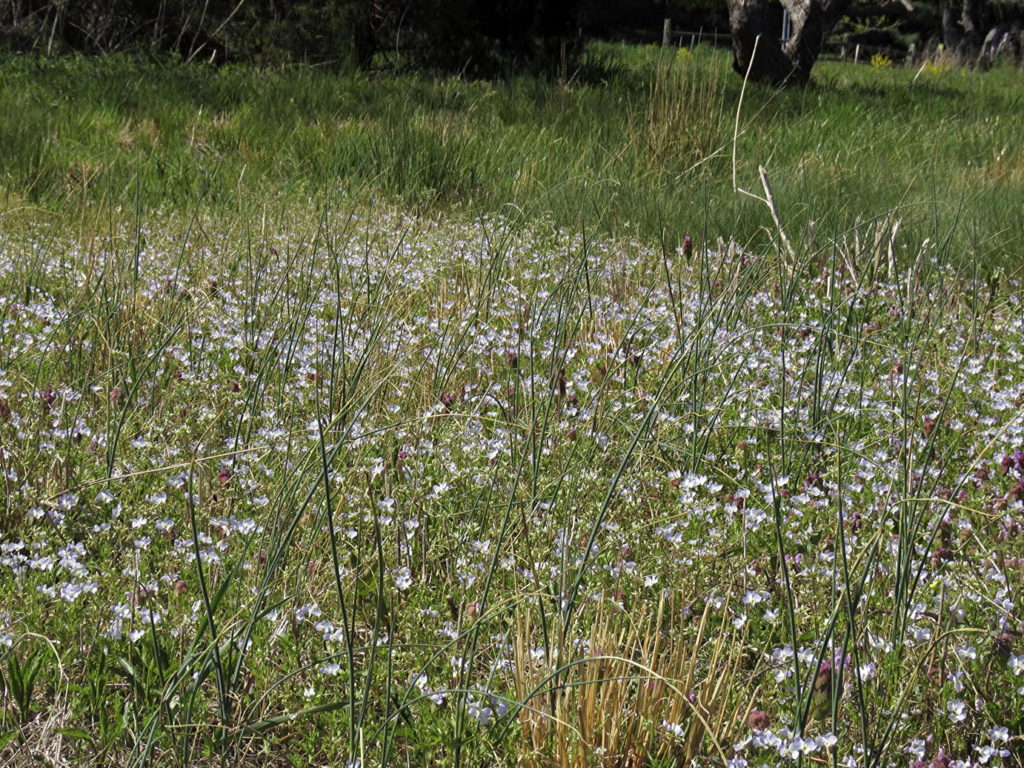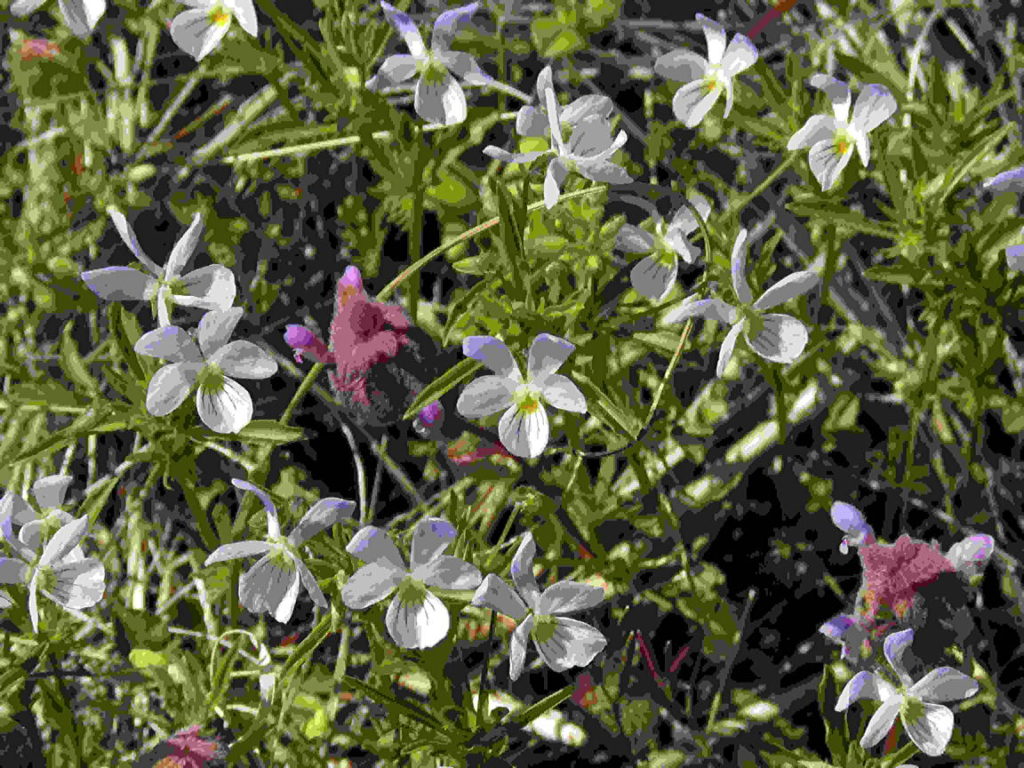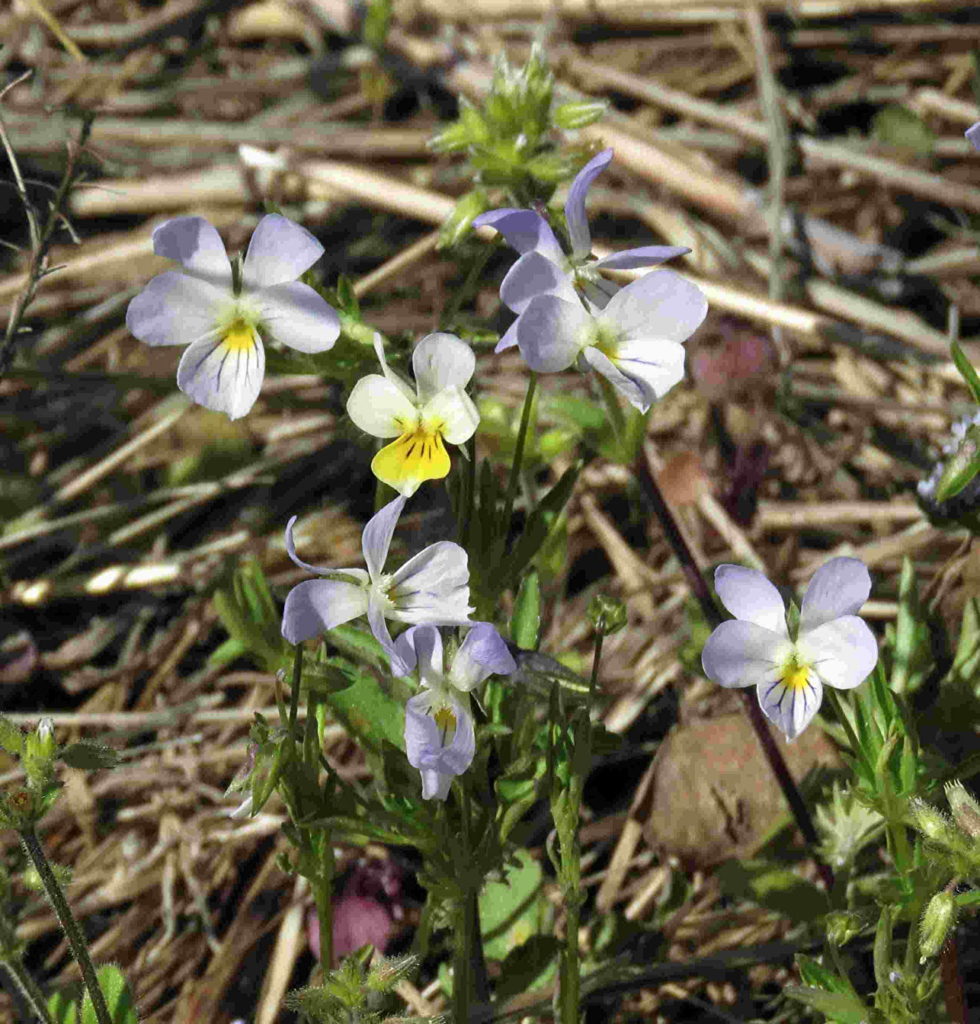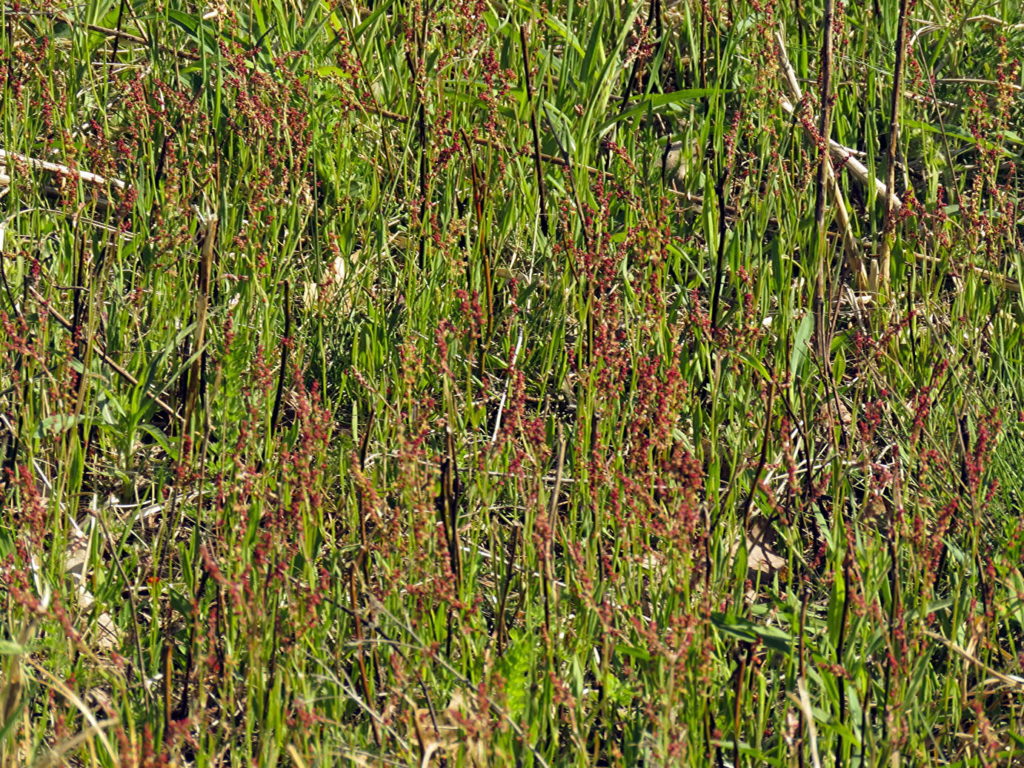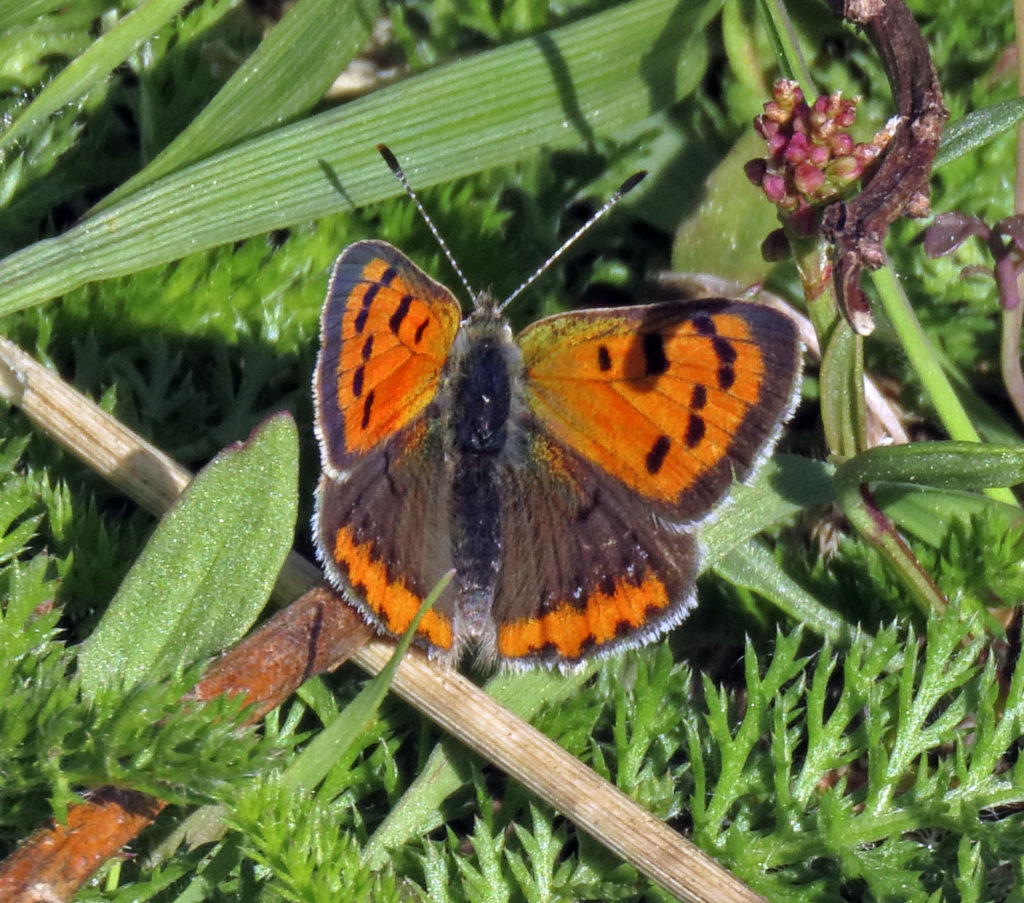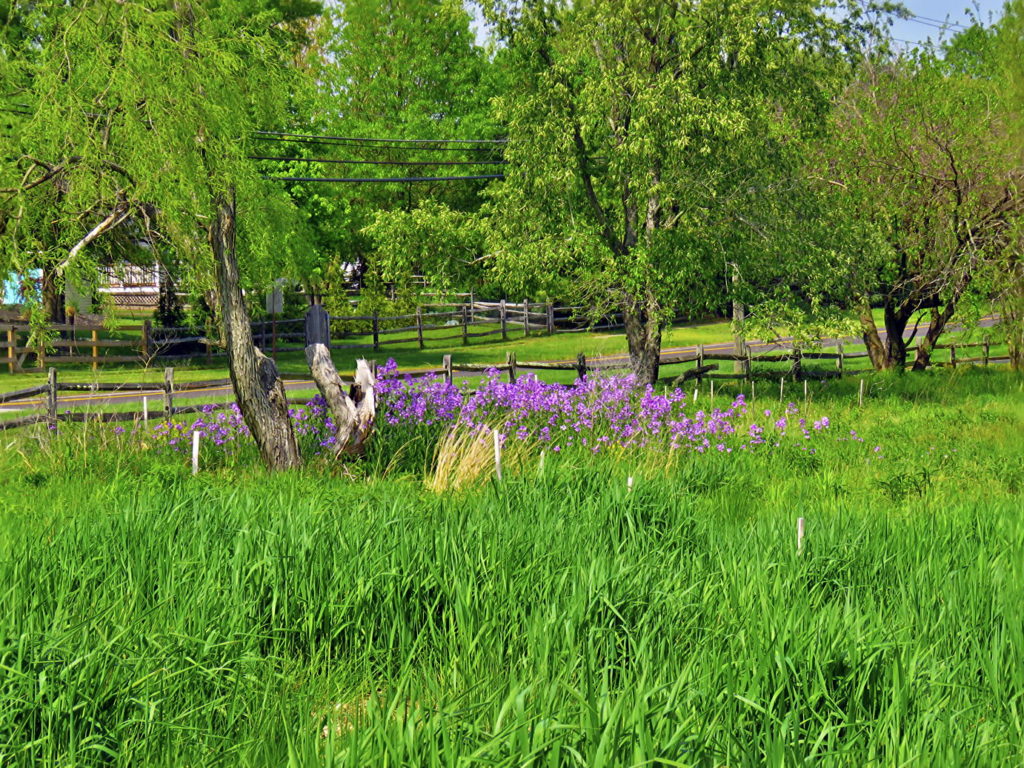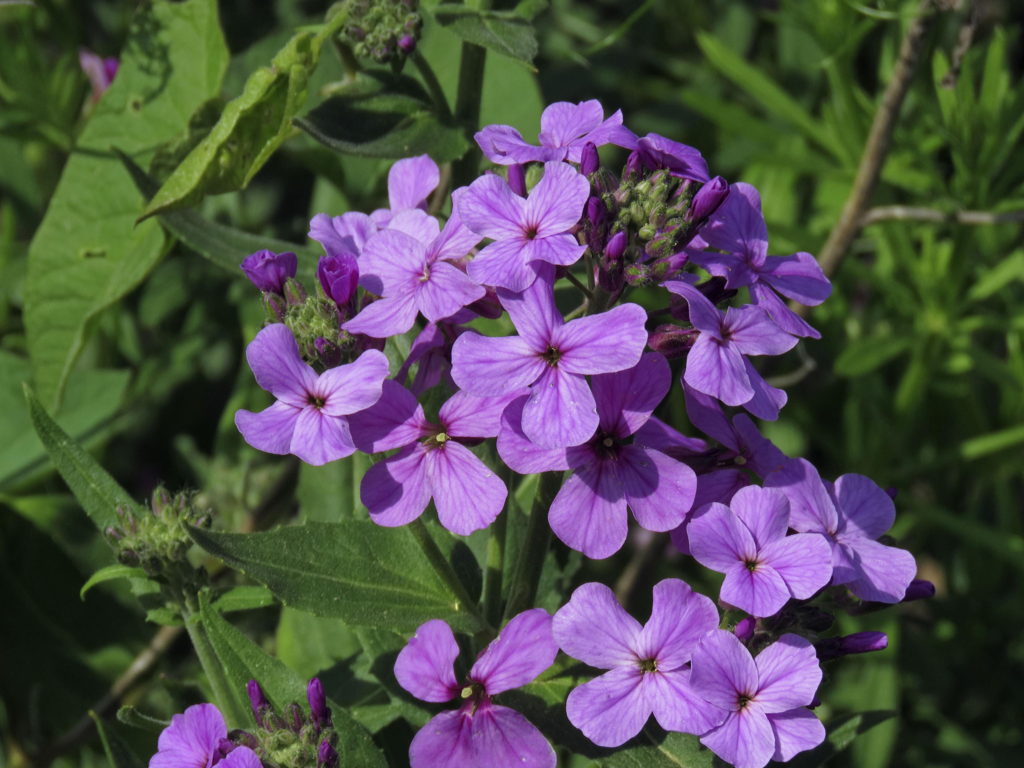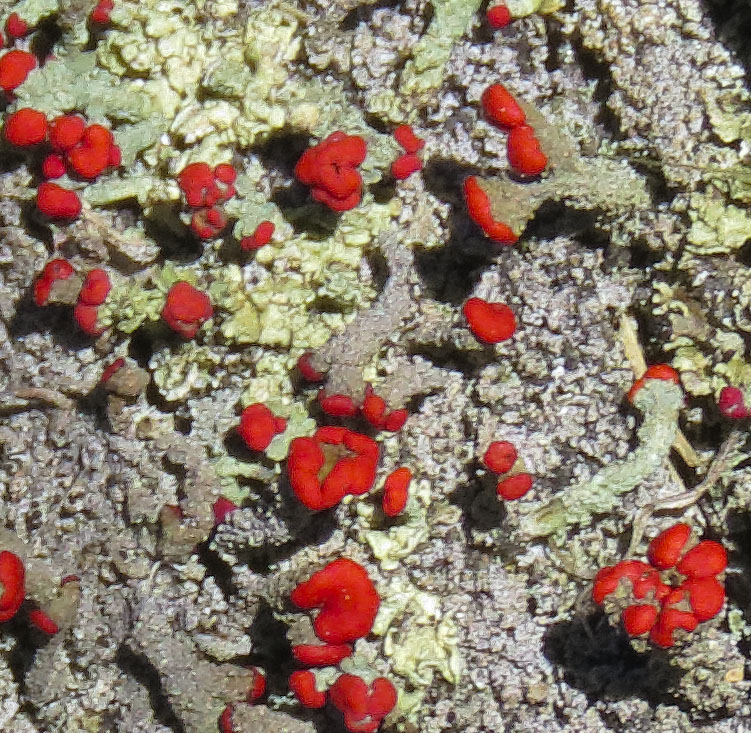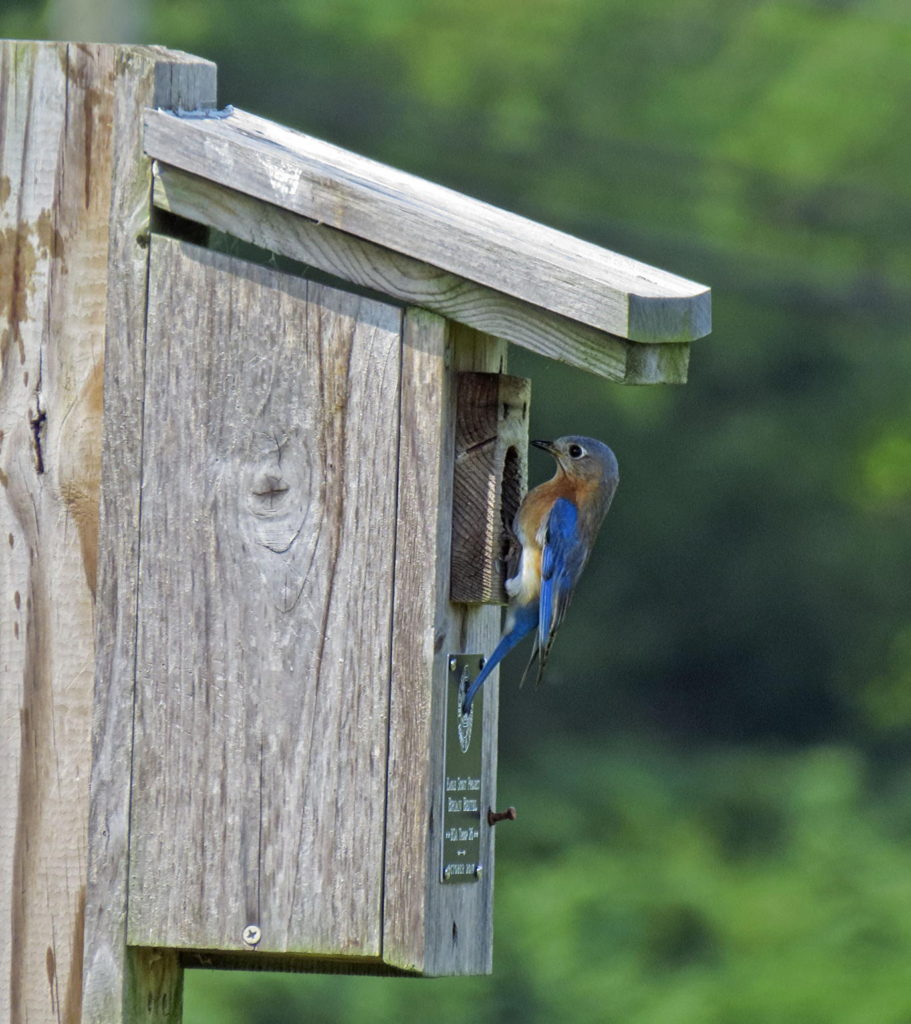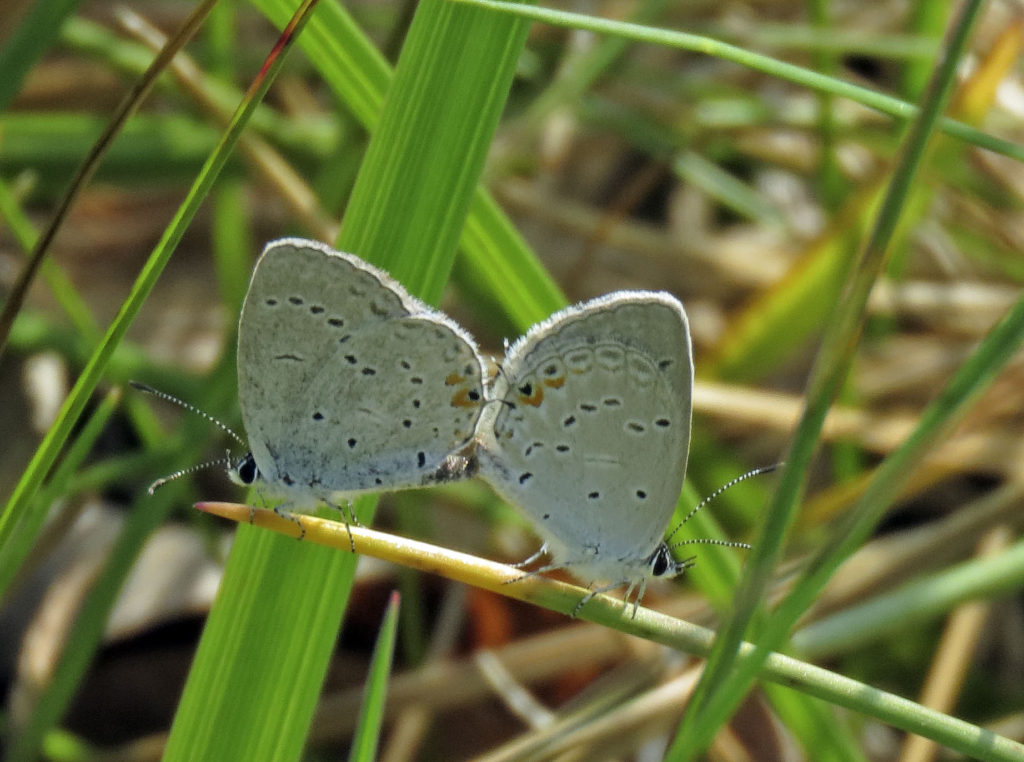A week after the 40th Anniversary celebration of the Barton Arboretum, I took a walk on R8 through the main East meadow. The most prominent plants in sight were the wild yellow mustards.
There are several yellow mustards, posing thereby a major problem in speciation. My wife, Jean, would scold me, “A flower is just a pretty face. Be sure to record the leaves.” So, identifiable in this case by the large basal leaves, is the introduced Bitter WinterCress (Barbarea vulgaris).
But the main treat of the day was an extensive patch of small blue flowers off the path toward the silo (above).
A closer view revealed a bed of pansies popularly called Johnny Jump-Ups for their early appearance in Spring. The majority, by far, are the native American Field Pansy (Viola bicolor).
The occasional exception, smaller and with a yellow lip, is the introduced European Field Pansy (Viola arvensis).
May 6: Dame’s Rocket
A month ago I viewed with horror a backhoe churning up the turf around the silo. Gone was the area where Dame’s Rocket would grow accessible to everyone walking the meadow trails. I was greatly relieved then to see a flourishing patch of these flowers along Wilkins Station Road. which someone has thoughtfully staked out to protect them from mowing. They’re at their peak this week, even if you have to settle for a view from the sidewalk outside the fence.
I suggest you look closely at the weathered railing of the fence along Wilkins Station Road:
You are looking at two types of lichen, at left a representative of the foliose (leaflike) lichens seen most commonly on tree bark, and at right and further magnified, a fruticose stalked species amusingly named British Soldiers by an American botanist in the mid-19th century. In both cases they are fungi that have enveloped a symbiotic partner, a photosynthesizing algae or bacterium as evidenced by their pale greenish cast. The red caps are the spores of the host fungus, Cladonia cristatella.
Should you venture on the mown path in the meadow, Bluebirds are nesting, unmolested (so far) by Tree Swallows, and tiny butterflies, Eastern Tailed Blues, are coupling in the grasses. Look closely at the right hand member of the pair; at the margin of the lower orange spot a tufted hair extends like a pony tail and gives this species its name.
Text and photographs by Fred Kahan



